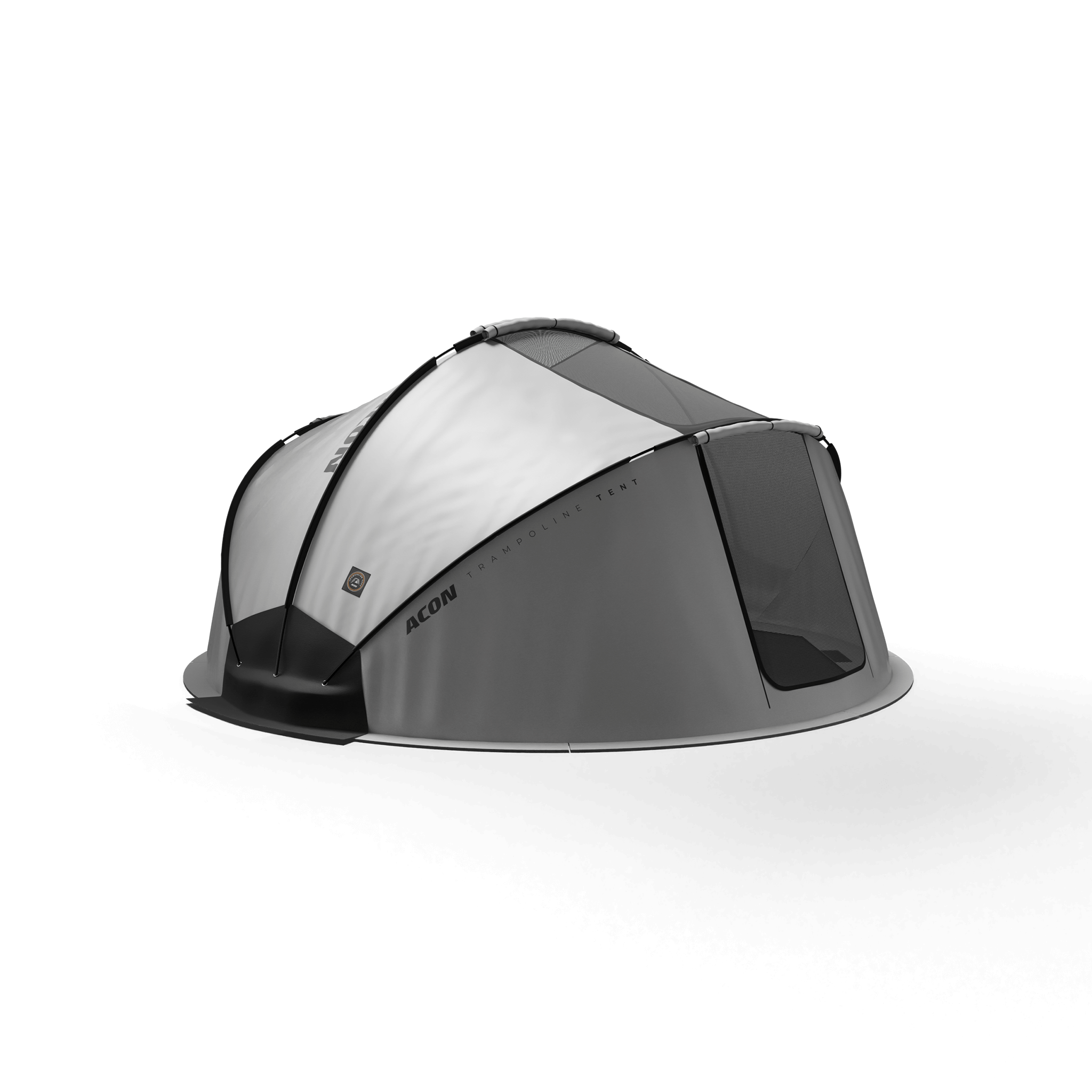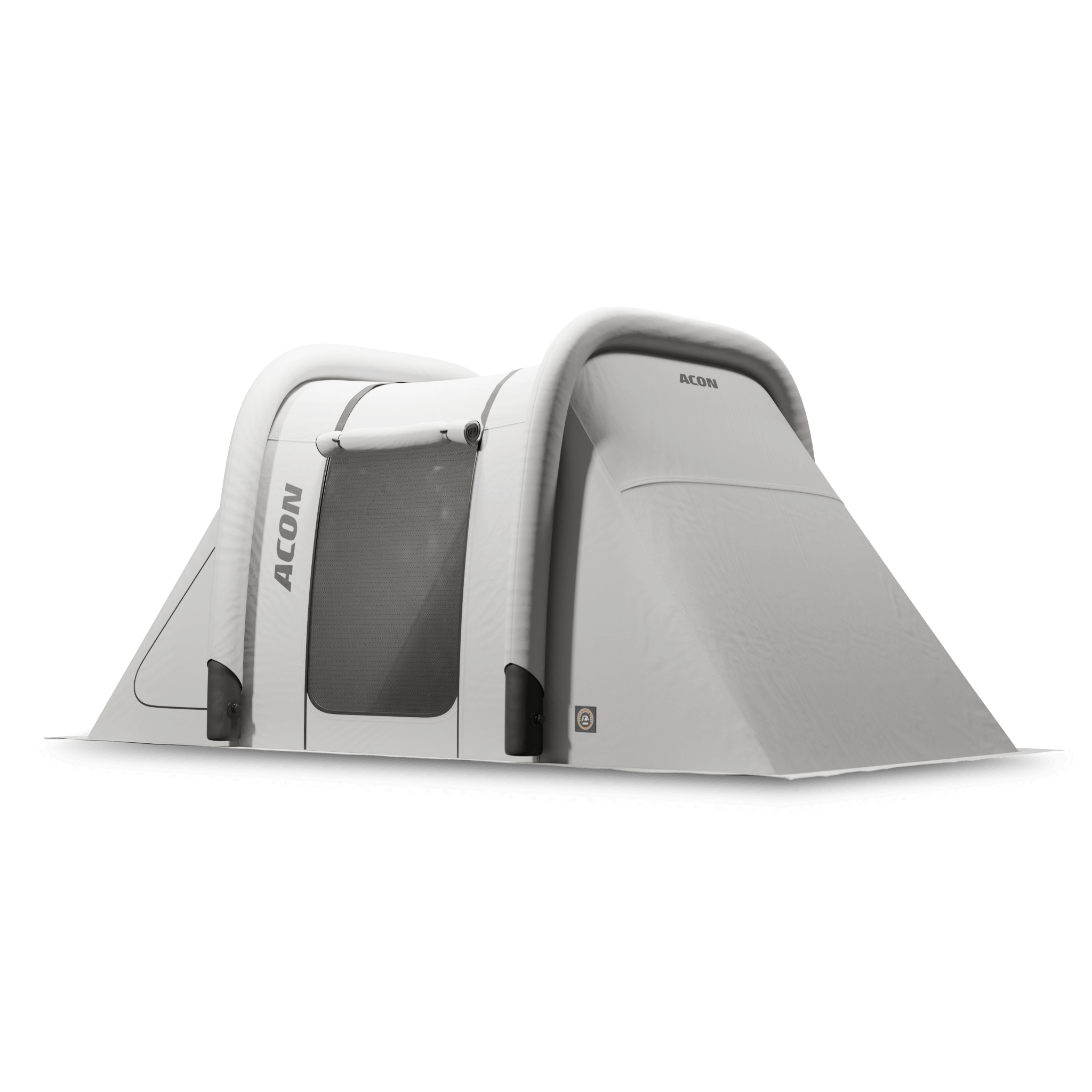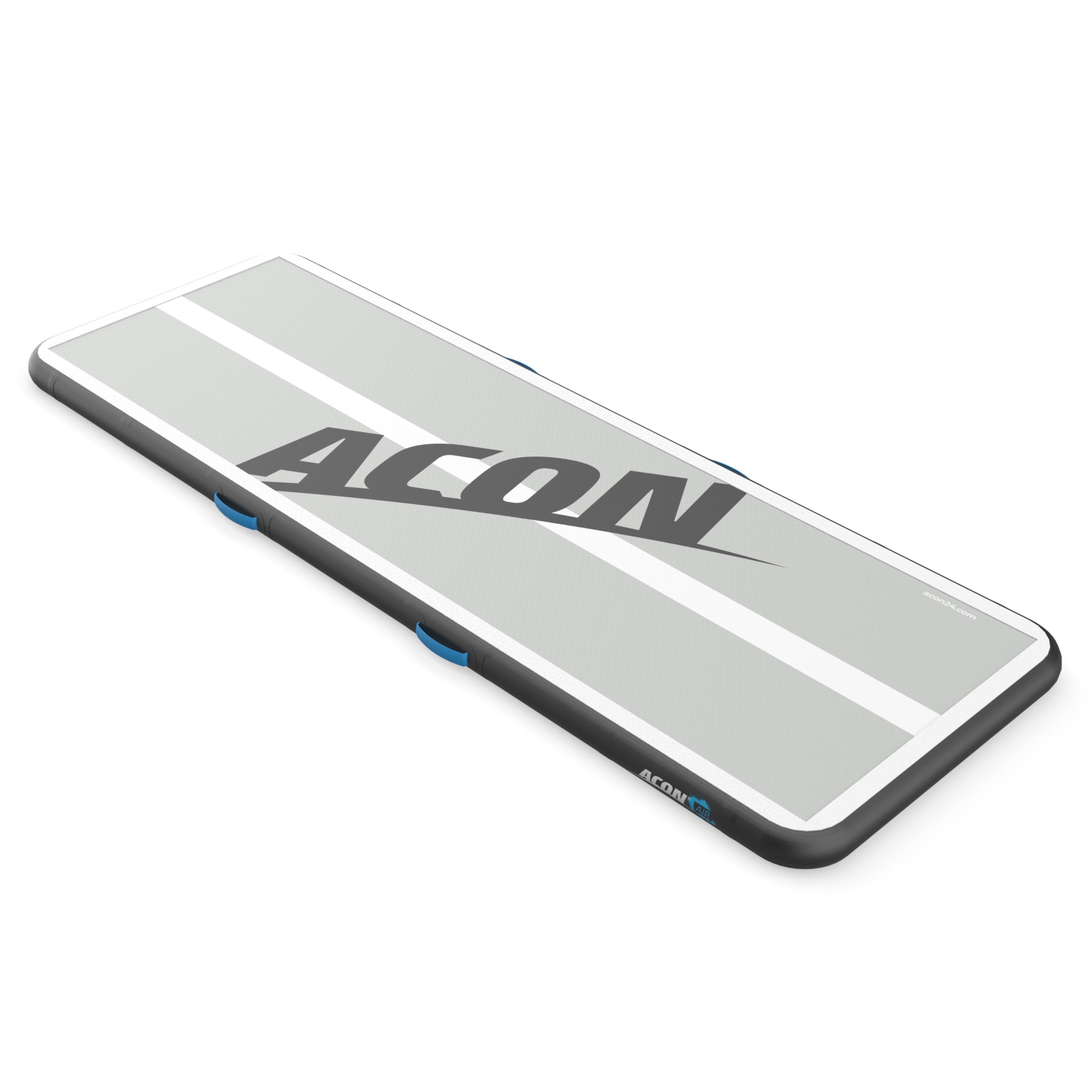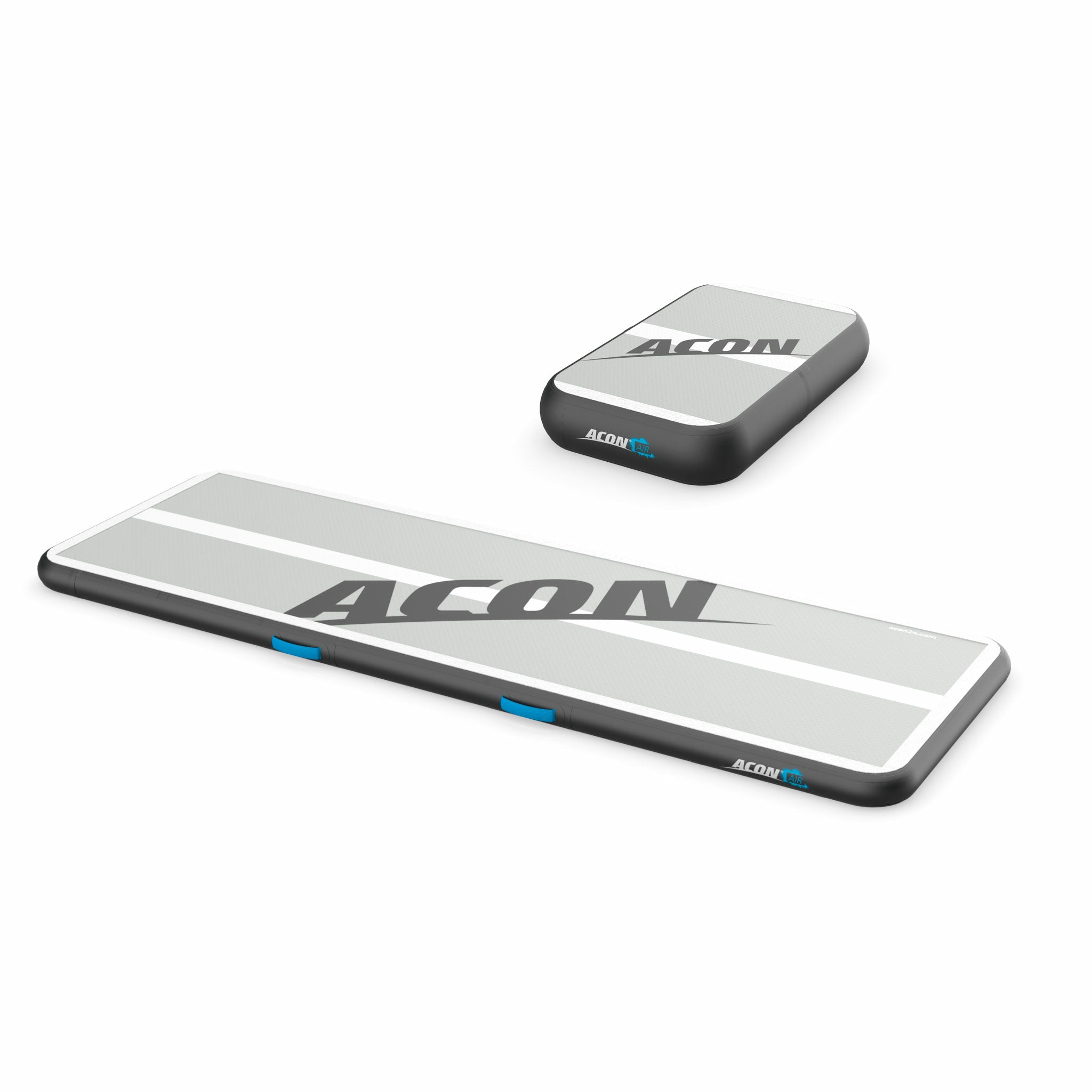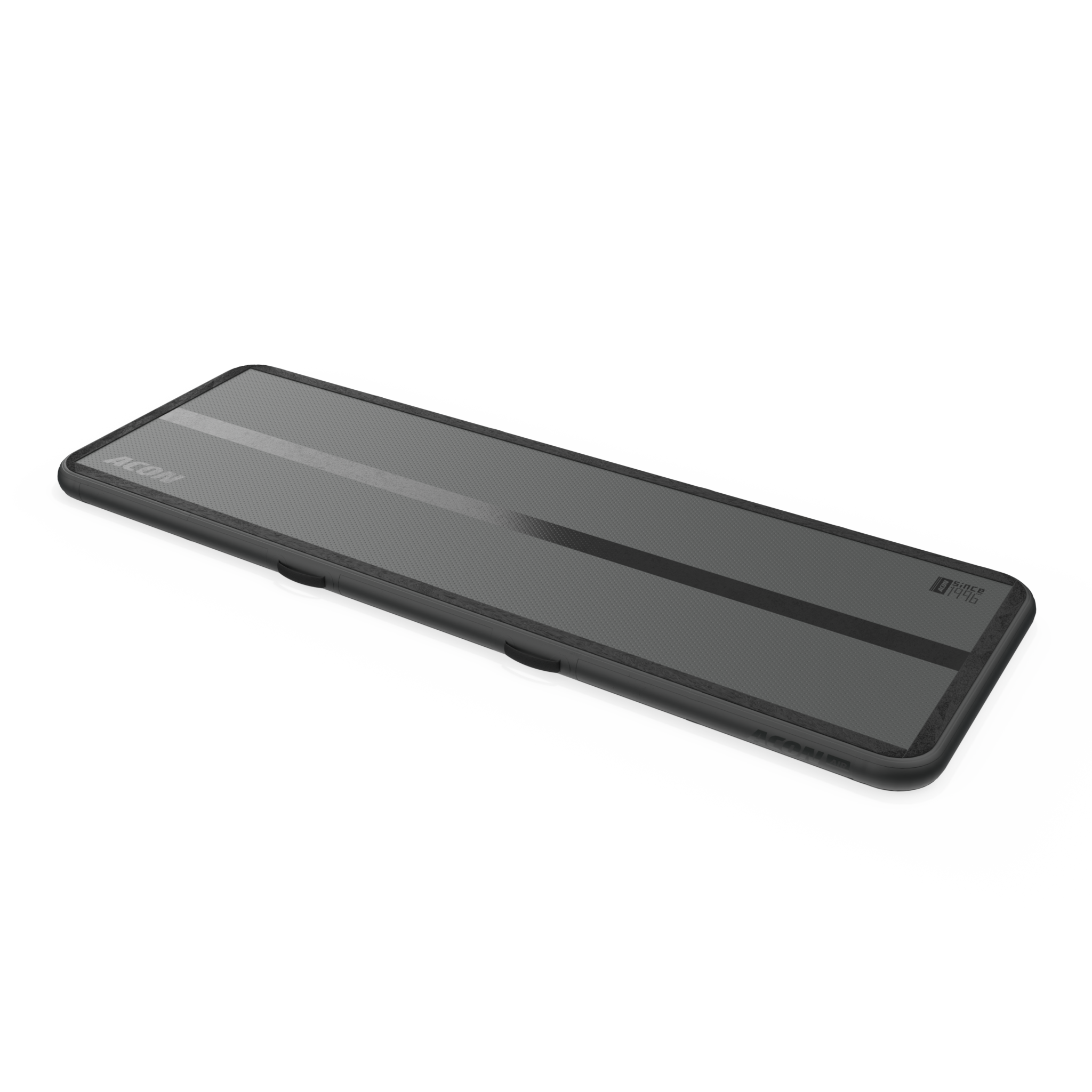Acon is proudly Finnish!
We're headquartered in Oulu, Finland—but we ship to Canadian customers from our U.S. warehouse for faster delivery.
Distributed by our North American Distribution Partner Distribuacon Inc.
Ships from:
6035 Queens Ave NE Ste. 200
Otsego, MN 55330, USA
An Airtrack offers endless possibilities for creativity and physical activity. You can work on your skills, or simply have fun while getting fit. In this article, we explore the features, functionality, and benefits an Airtrack provides for users of all ages and fitness levels. By the end, you’ll feel prepared to bounce into a whole new world of exciting workouts with the help of an Airtrack.
AirTrack – what is it?
An Airtrack is a bouncy, inflatable mat that lets you defy gravity. Airtracks are known for their adjustability when it comes to the bounce since you are able to modify it based on the amount of air in the mat. Whether you're an aspiring gymnast, a fitness enthusiast, or just someone looking for a unique way to have fun, this mat is sure to take your breath away - and give it back - with each leap.
What is AirTrack made of?
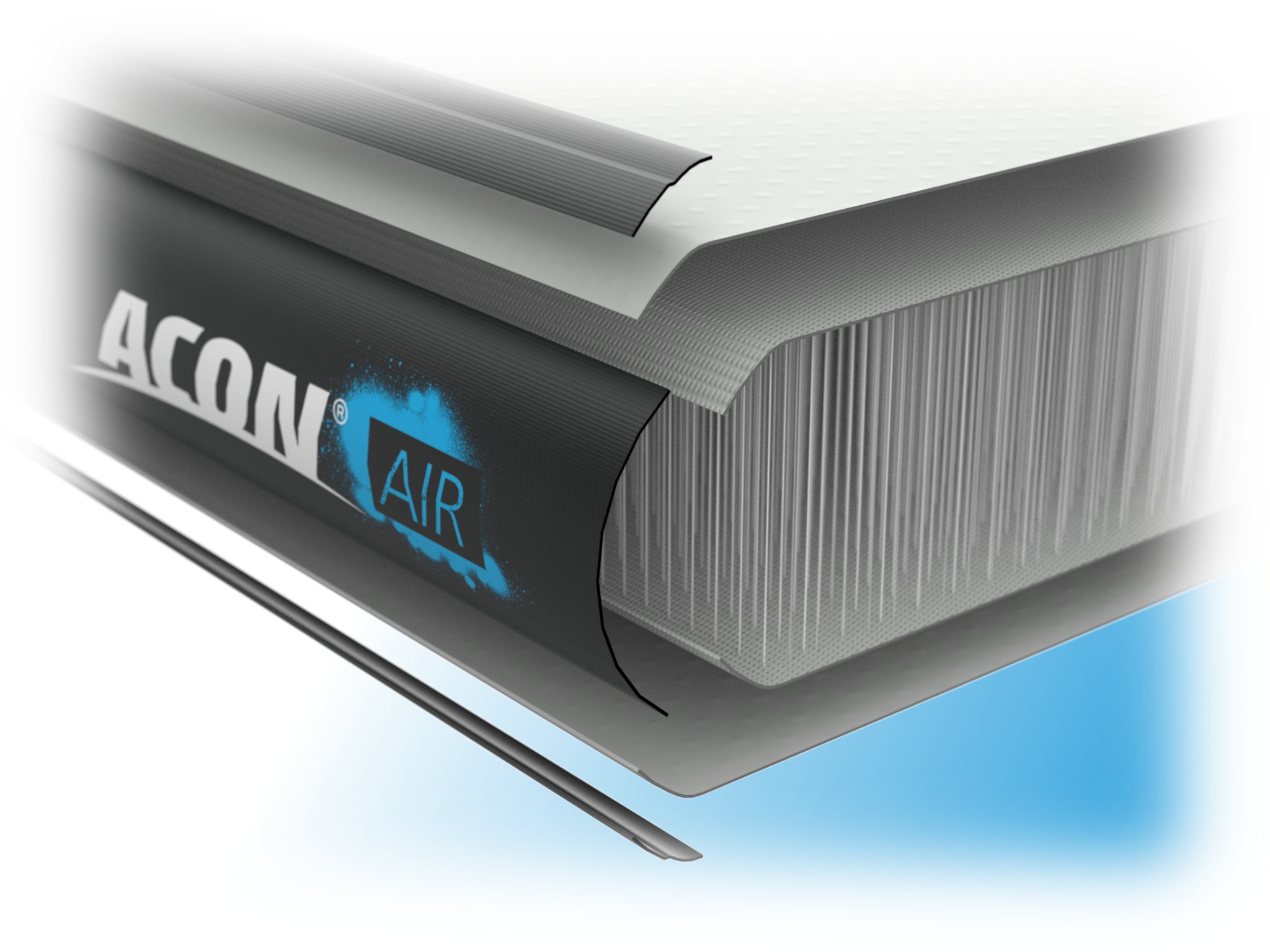
An Airtrack provides a safe and cushioned surface for athletes to practice their skills without the risk of injury. To do this safely and well, Airtracks are typically made from high-quality materials such as drop-stitch fabric or PVC. These materials help ensure their durability and longevity. For quick inflation and deflation, an Airtrack often comes with either a manual or electric pump depending on the size of the mat. This makes it easy to set up and store when it's not in use.
Let's take a closer look at the materials generally used to make the Airtrack.
- PVC (Polyvinyl Chloride) Material: The outer layer of an Airtrack is typically made from high-quality PVC fabric. This material is known for its durability and resistance. It can withstand constant use, heavy impacts, and rough handling without tearing or wearing out easily.
- Reinforced Drop Stitch Technology: The core structure of an Airtrack gets its strength from reinforced drop stitch technology. This involves thousands of polyester threads connecting the top and bottom layers together tightly. These threads are stitched in a crisscross pattern to create compartments within the Airtrack.
- Airtight Valves: Airtracks are inflatable by nature, so they come with airtight valves that allow easy inflation and deflation, using either an electric pump or a manual hand pump. These valves prevent any leakage once inflated to ensure performance during training sessions, while maintaining optimal pressure inside the mat.
- Elasticity Bands: Some advanced Airtracks may also include elasticity bands on the sides or ends to increase stability during high-intensity exercises or when multiple units are connected together.
- Non-Slip Surface Coating: To enhance grip and prevent slipping accidents, many Airtracks have an anti-slip coating applied on top of the PVC fabric surface. This coating provides additional traction for athletes performing flips, jumps, and more.
Of course, there are variations between brands of Airtrack, but these are the materials you will generally find in them. Acon’s Airtrack features handmade seams, making it extra durable so you can enjoy your Airtrack longer. Our Airtrack is extra durable and easy to keep clean, with an anti-slip surface for your budding gymnast or trickster.
Types of AirTracks
Airtracks are inflatable mats or tracks that provide a safe and bouncy surface for gymnasts, cheerleaders, parkour enthusiasts, and other athletes to practice their skills. Each type of Airtrack offers its own features and benefits.
AirTrack mat
This is the most basic type of Airtrack available. It consists of an inflatable mat with a flat surface that provides consistent bounce and cushioning. Standard Airtracks are great for beginners or for anyone for general use in gymnastics, parkour, kids’ play, or tumbling. They come in rectangular and square shapes. If you plan to get just one type of Airtrack, we recommend getting this one.
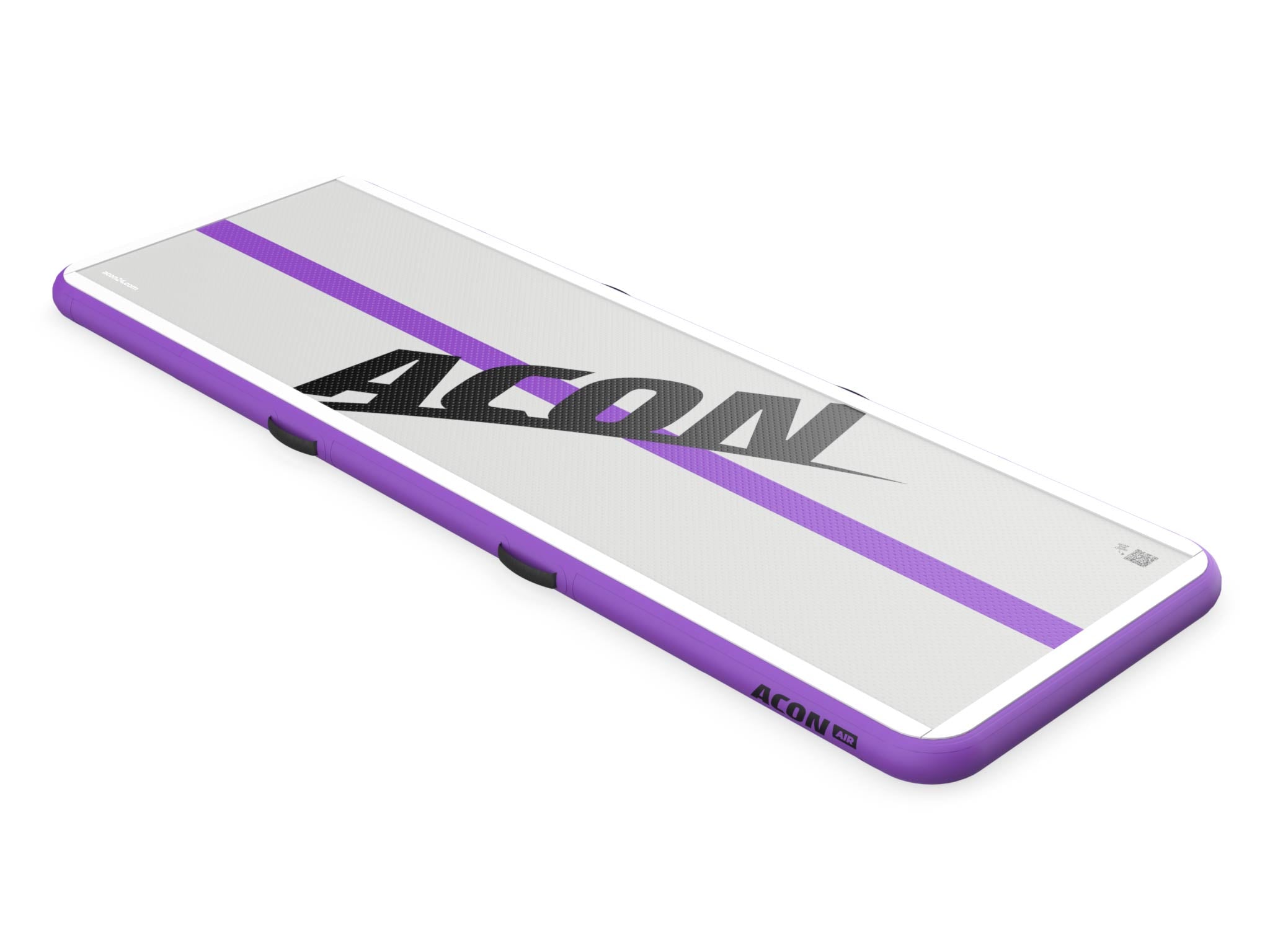
AirBlock
An Airblock is a small version of an Airtrack. It's designed to mimic traditional foam blocks used in gymnastics training. They are perfect for learning new skills like handsprings, backflips, or vaulting techniques. Airblocks also have Velcro strips, so you can attach them to the surface of the Airtrack. Airblocks can also be stacked in case you need more height for your training.
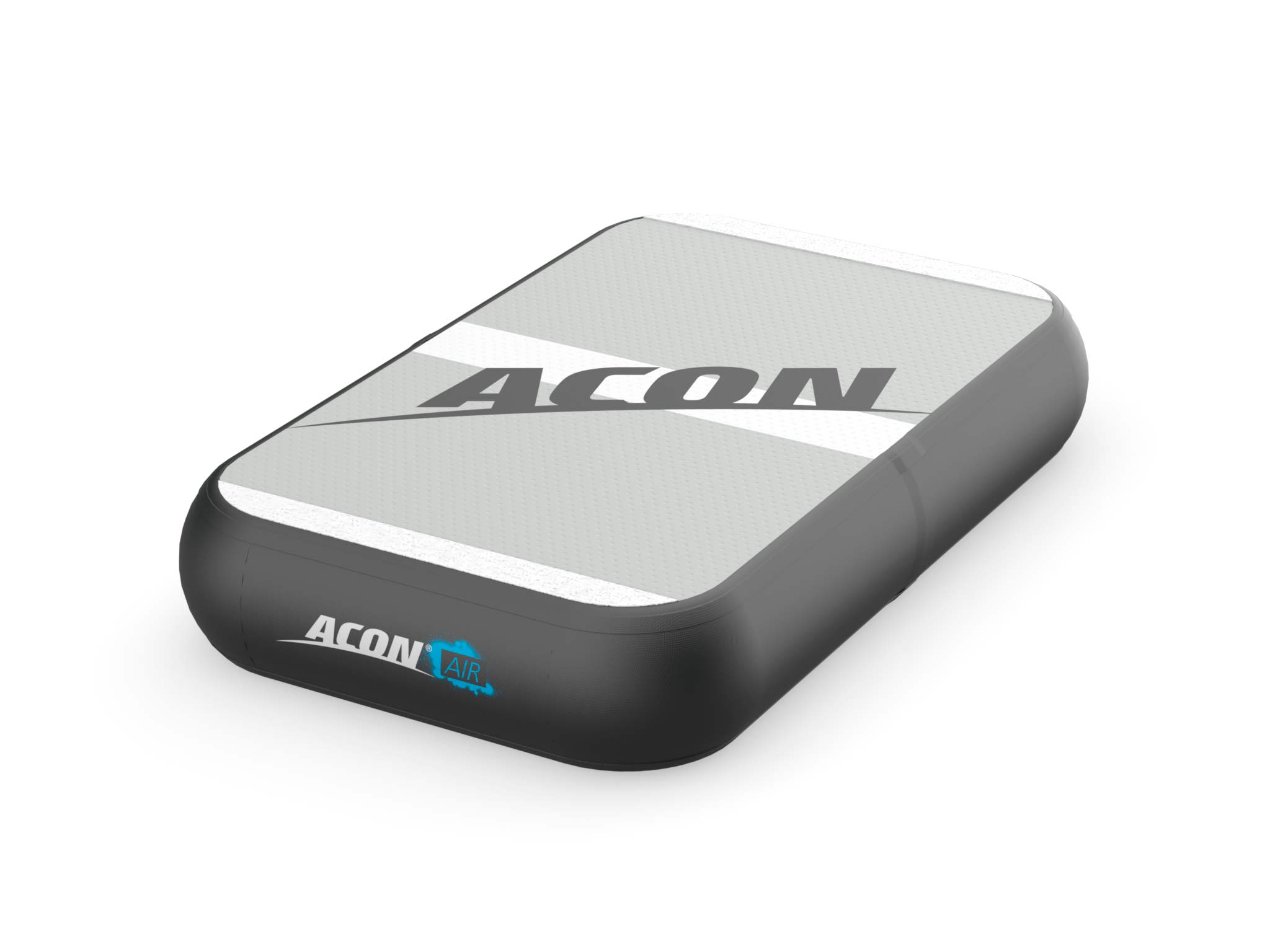
AirSpot
Similar to an Airblock but larger in size and different in shape, an Airspot is commonly used by cheerleaders as a landing platform during high jumps and stunts like basket tosses or pyramids. You can use it, however, nearly as you wish!
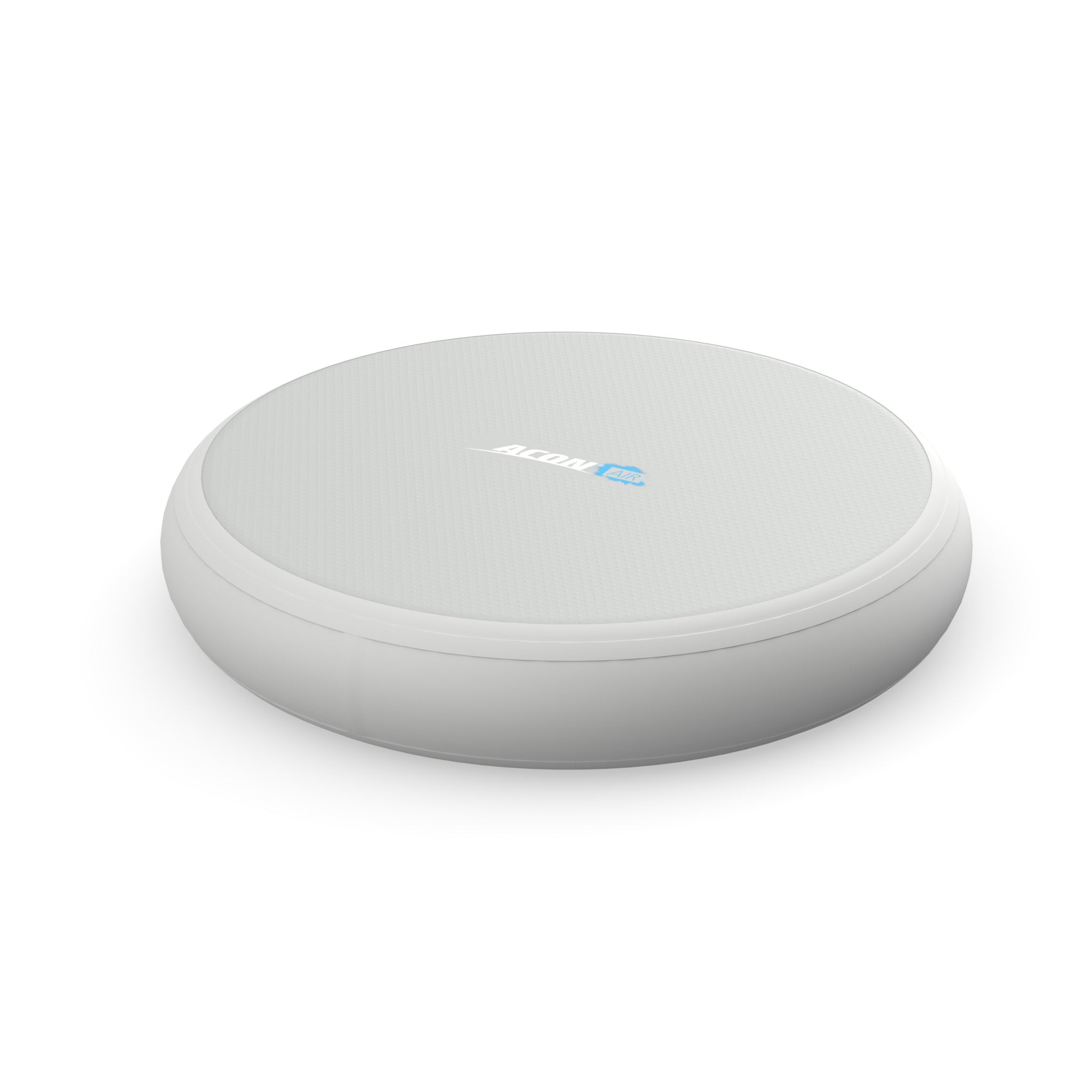
AirRoll
An AirRoll is a cylindrical-shaped inflatable air mat that serves as an extension or accessory to a traditional flat-surfaced gym mat. This item is ideal for nailing those front and backflips.

What Can You Do on An Airtrack?
There are a whole host of activities you can enjoy with an Airtrack, including:
Gymnastics
AirTracks offer gymnasts a safe platform to practice and perfect their skills. Whether you're a beginner or an advanced athlete, these bouncy mats can help enhance your training sessions. Tumbling passes, backflips, front flips, cartwheels – the soft landing provided by the AirTrack reduces the impact on joints while allowing you to focus on technique.
Tricking and parkour
An Airtrack cushions while maintaining stability, making them ideal for honing aerial awareness during tricks such as twists and spins. Parkour enthusiasts can benefit greatly from precision jumps – those challenging leaps where accuracy is most important. The soft surface allows for repeated attempts without excessive strain on the joints. Airtracks are also great for tricking and parkour due to the fact that they can be stacked and some are even attached to each other, making them customizable.
Yoga and meditation
While these inflatable mats are initially designed for more active exercises, you can also use your AirTrack to practice yoga and meditation. Practicing difficult inversions like headstands or handstands with added safety is fun thanks to the padded surface or simply benefit from the padded surface to assist your gentle flows or core strength exercises.
Kids' play
Kids can practice tumbles, cartwheels, and headstands on the padded surface of an Airtrack. Build better body awareness with exercises that challenge their flexibility and strength. You can build an obstacle course using hula hoops, pillows, and soft play items they have to jump over for a fun and energetic activity.
Water activities
Create a giant slip-and-slide in your backyard using your Airtrack and a garden hose, have fun as you slide and glide across the slippery surface. You can also use your Airtrack as an air mattress and relax on it on hot summer days.
Airtracks vs Gymnastics Mats
Both Airtracks and gymnastics mats serve as cushioning surfaces that absorb impact during jumps, flips, or falls. However, there are some notable differences between them.
An Airtrack provides a spring-like effect that can amplify your movements while offering excellent support for advanced tricks. This bounce is also conveniently adjustable, according to how much air you release or add to it. On the other hand, gymnastics mats are usually made from foam or rubber materials designed to provide stability and shock absorption without any additional bounce.
Airtracks can be easily deflated and rolled up into a compact size for convenient transportation or storage, whereas gymnastics mats tend to be bulkier and more challenging to transport due to their solid structure. On the other hand, foldable mats may be more handy for some.
In addition, Airtracks usually tend to come in a greater variety of sizes compared to traditional gymnastics mats starting from standard 10ft Airtracks to large 20x20 square mats. While there also is variation in traditional gymnastics mat sizes, it’s not as vast compared to these fun inflatable mats.
In short, Airtracks have more multipurpose features than a typical gymnastics mat. They are more diverse, with more functions to offer their users.
Airtracks vs Foldable Mats
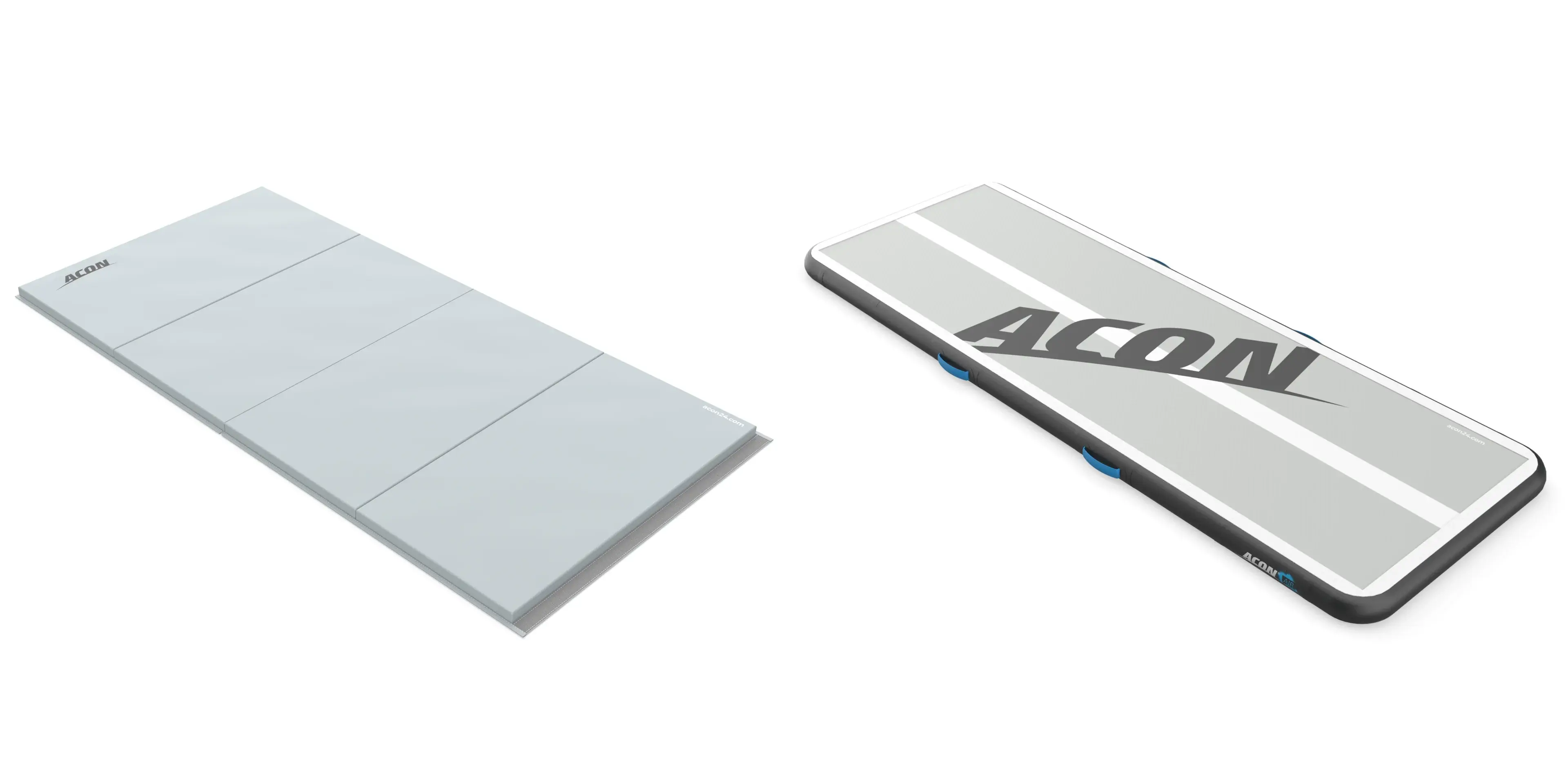
Both Airtracks and foldable mats provide cushioning during workouts but differ in impact absorption abilities. Foldable mats typically have multiple layers of foam padding that offer shock absorption properties for exercises like yoga, pilates, or simple gymnastics and floor workouts. Airtracks take cushioning to another level with their inflatable design that allows for adjustable firmness levels depending on your preference. The air-filled chambers provide exceptional shock absorption, making them ideal for high-intensity gymnastic routines or tumbling exercises.
When it comes to durability, both Airtracks and foldable mats are built to withstand regular use. Foldable mats are designed specifically for easy folding, compactness, and convenient transportation. They can be effortlessly stored under a bed or in a closet when not in use. Airtracks can be inflated or deflated based on your requirements. This makes them highly portable as they can be easily rolled up or packed into a carrying bag once deflated.
Airtracks vs Crash Mats

Crash mats are specifically designed for landing safely after performing advanced tricks like flips or acrobatics on different apparatuses like bars or beams. They provide ample cushioning during falls and reduce the risk of injuries by absorbing impact effectively.
On an Airtrack, the bouncy surface allows athletes to practice aerial moves with reduced impact on joints. While crash mats are not as portable as Airtracks due to their solid construction, they still have handles or straps for easier carrying. ACON sells crash mats for slightly different purposes in two sizes: small and big.
AirTrack Sizes
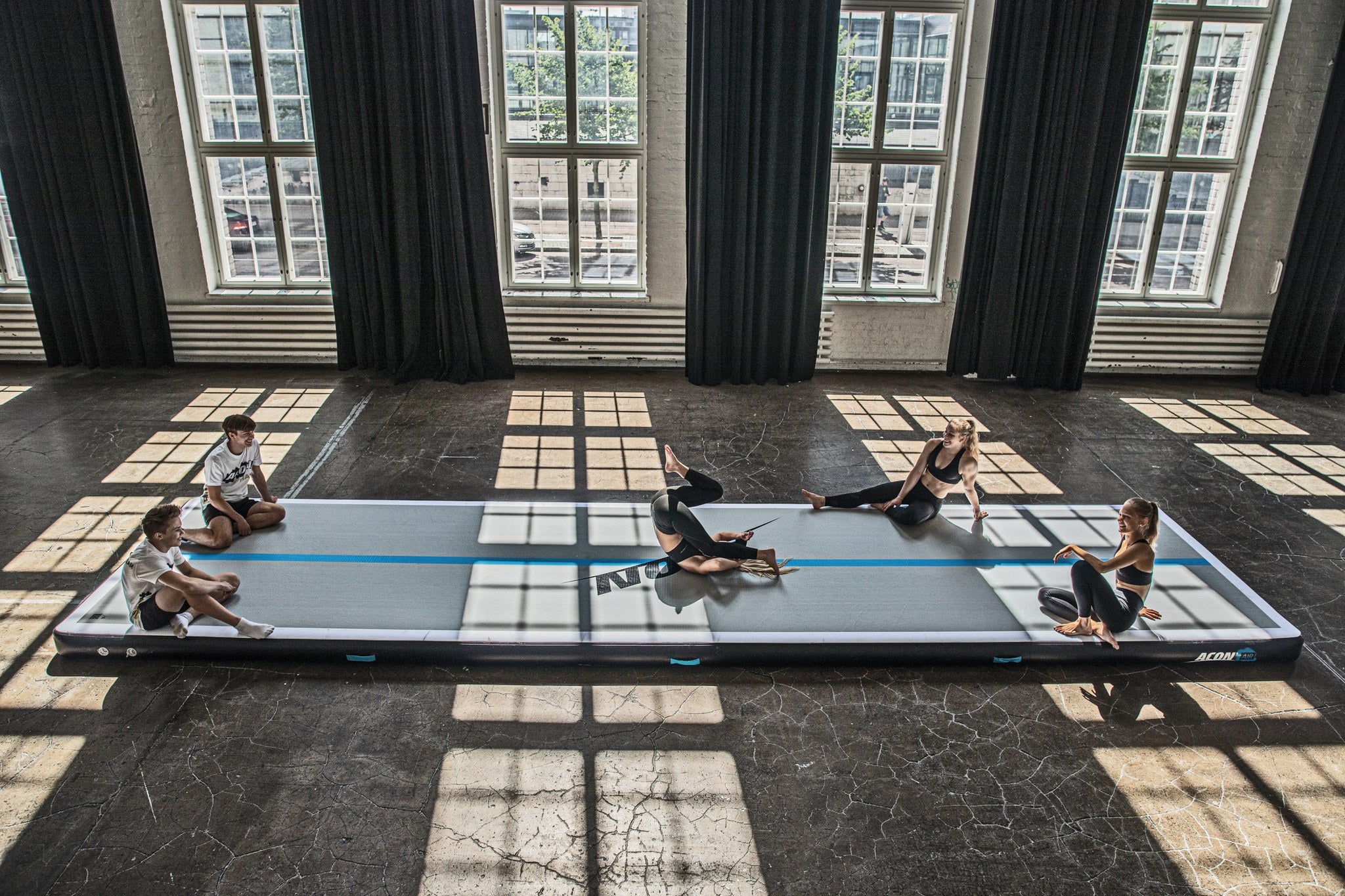
The size of the Airtrack will determine its suitability for specific uses and the available space you have for setup. Note that the thickness also matters; the thicker the Airtrack mattress is, the more flexible and softer it is. The thinner ones are lighter and easier to handle. So, consider all measurements important, not just length!
Small Airtracks: Small Airtracks are usually relatively compact in size, most often being 10ft. These smaller Airtracks are perfect for home use, as they can be easily set up in a living room, backyard, or garage. They are great for practicing basic gymnastic skills like rolls, handstands, and cartwheels. When it comes to thickness, regular ACON Airtracks of small size (below 13ft) are 4 inches thick. The ACON Airblock is an exception to this as it is 8 inches thick.
Intermediate Airtracks: Intermediate-sized Airtracks typically measure between 13ft to 26ft long. These Airtracks offer more space for advanced gymnastics moves such as backflips and somersaults while still being manageable enough for home use if you have sufficient space available. When it comes to thickness, regular ACON Airtracks that are at least 13ft in length are 8 inches thick.
Large / Professional Airtracks: Professional-grade Airtracks come in larger sizes, ranging from over 26ft to 39ft and above. Square models also belong in this category. These longer tracks provide ample space for professional athletes or gymnasts to practice complex routines with multiple flips and twists. They are commonly used in gyms, training centers, or competitions where more advanced skills are honed. All large Airtracks are 8 inches thick.
In short, ACON offers the following Airtrack sizes:
Safety and Maintenance Tips for Using AirTracks
In general, Airtrack is a safe product. However, it's important to make sure that an Airtrack is properly maintained and used with caution to prevent any accidents or injuries. Proper maintenance also extends its lifespan.
Below, we've listed a few tips that are likely to help you out when you are starting your journey with a brand-new Airtrack.
Safety Tips
While these mats provide a fun and dynamic way to practice skills and perform tricks, it is important to keep safety in mind. Here are some essential safety tips:
- Proper Set-Up: Before using an Airtrack, ensure that it is placed on a flat and even surface. Avoid setting it up near any sharp or hard objects that can cause injury (or damage mat) if fallen upon.
- Warm-up: Always warm up before using the Airtrack to prepare your body for physical activity. Stretching exercises will help loosen muscles and prevent potential injuries.
- Safety Mats: Place crash mats or another Airtrack around the Airtrack to provide extra protection if you are unsure or feel like it is necessary.
Maintenance Tips
Like any other equipment, Airtracks require regular maintenance to ensure optimal performance and longevity. Here are our top maintenance tips:
- Proper Cleaning: Regular cleaning is crucial for maintaining the hygiene of your Airtrack. Start by removing debris such as dust, dirt, or hair from the surface using a vacuum cleaner with a brush attachment. For deeper cleaning, use mild soap or detergent mixed with water and gently wipe down the surface using a sponge or cloth. Avoid using harsh chemicals or abrasive materials that may damage the material.
- Storage: When not in use, it's important to store your Airtrack properly to prevent unnecessary wear and tear. Roll up the Airtrack tightly but avoid folding it as this can cause creases that may impact its performance over time. Store it in a cool and dry place away from direct sunlight or extreme temperatures which can deteriorate the material.
- Inspection & Repair: Regularly inspect your Airtrack for any signs of damage such as cuts, punctures, or loose seams before each use. Small tears can be repaired using specialized repair kits available from manufacturers; follow their instructions carefully for effective repairs. Addressing minor issues promptly prevents them from worsening and ensures safety during training.
Proper safety and maintenance will get the most from your Airtrack, keeping it bouncy and providing hours of fun for years to come.
How much do Airtracks cost?
For a basic Airtrack suitable for home practice (around 10ft long), prices usually start at around $250-$300. These models are often made from durable PVC materials, providing enough room for most beginner gymnasts.
As you move up in size and quality, the price naturally increases. Mid-size Airtracks can cost anywhere between $500-$1000. These models are often longer and thicker compared to basic models.
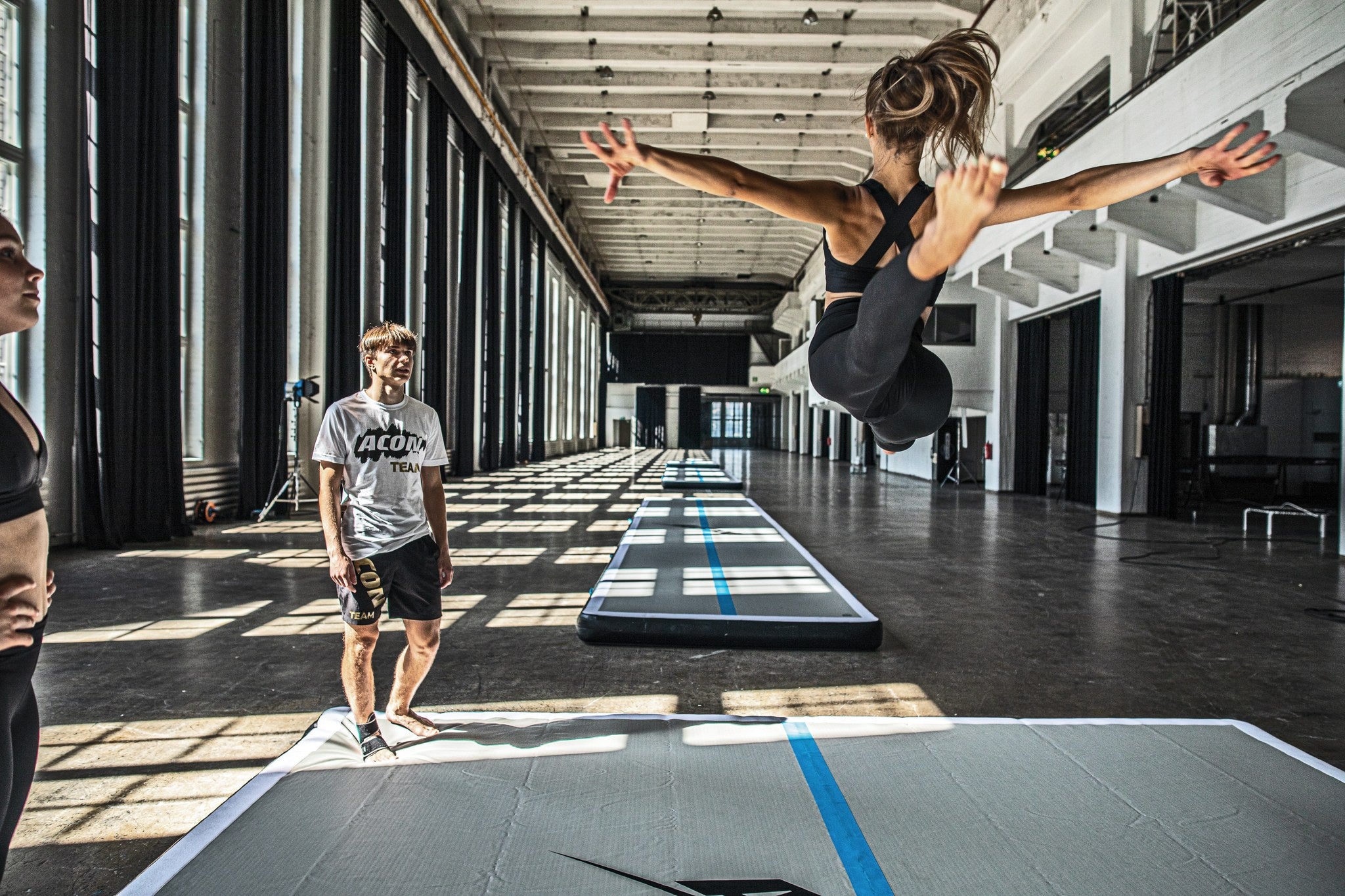
At the top end of the spectrum are professional-grade Airtracks used by gymnasts during competitions or advanced training sessions. These large-sized models (over 30ft) with superior bounce capabilities can range from $1000-$3000 or even more depending on customization options like length variations, warranties, or other requirements.
When it comes to ACON, the prices of our high-quality Airtracks that have handmade seams start at around $300, the most expensive one being the 20x20ft square Airtrack for $4149.
Buying tips for Airtracks
Are you planning to purchase an Airtrack for your home or gym? Nice! To ensure that you make the right choice, here are some buying tips to keep in mind.
Tip 1: Consider the Size and Thickness
Consider the size of the Airtrack based on your available space and intended use. Measure the area where you will be using it to determine the appropriate dimensions. The thickness of an Airtrack affects its performance, too. Note that thicker mats provide better shock absorption and support during high-impact activities, but thinner ones are easier to handle.
Tip 2: Warranty and Customer Service
A warranty offers peace of mind in case there are any defects or issues with your purchased product. Look for brands that provide a reasonable warranty period to protect your investment. A brand with good customer service will make life easier in case of any problems or maintenance issues with your Airtrack, so also bear this in mind.
ACON's warranty for Airtracks is 2 years for the mattress and 1 year for the pump.
Tip 3: Read reviews
Start by identifying trustworthy websites or platforms that provide genuine and unbiased user reviews. Next, read multiple reviews from different sources to get a well-rounded perspective. Pay close attention to specific details mentioned by reviewers such as durability, ease of inflation/deflation, stability during use, size variations available, and overall performance.
FAQ on Airtracks
How thick should the Airtrack be?
For general use at home, a thickness of 4 inches is usually more than sufficient. For extra cushioning and customization of the bounce, consider models that are 8 inches thick (13ft Airtrack and above).
How does the Airtrack differ from tumbling mats?
Airtracks are inflatable mats made of durable materials such as PVC or drop-stitch fabric. They consist of multiple air chambers that provide a cushioned surface for practicing various skills. On the other hand, tumbling mats are typically made of foam or sponge-like materials covered with vinyl or leather.
What Airtrack size should I choose?
Measure the area where you intend to set up the Airtrack. Consider both length and width dimensions to ensure there is enough space for movement and any additional equipment or mats required. For beginners or younger children, a smaller-sized Airtrack is likely to be enough, while more advanced gymnasts and trickers may require more space.


